[ad_1]
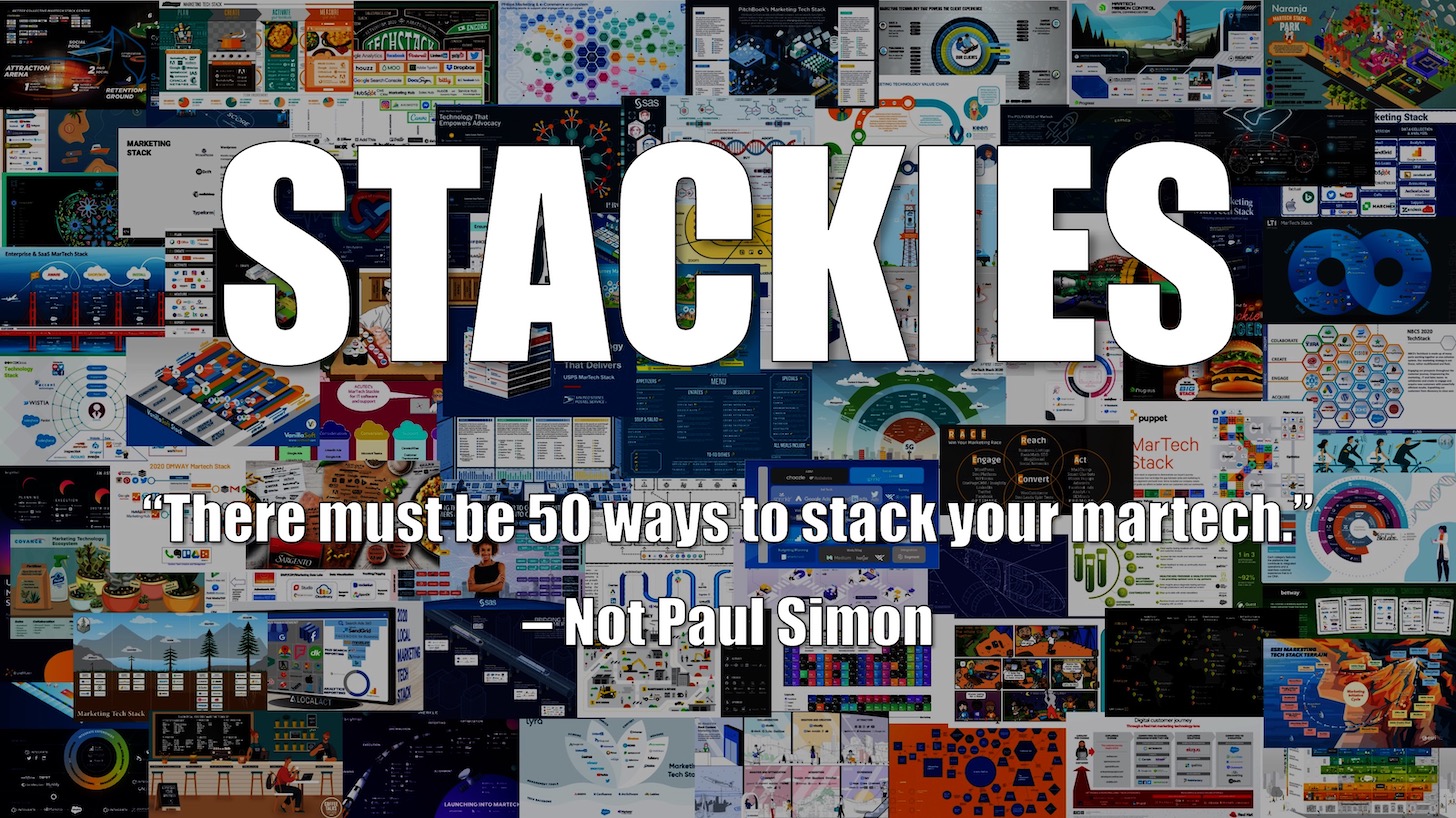
This is the 8th 12 months we’re operating The Stackies. It’s an awards system that invitations entrepreneurs to share a one slide illustrating their martech stack — the diverse apps and platforms they use and how they conceptualize them doing work with each other.
I’d stimulate you to participate (deadline for entries April 29). It’s a fantastic way to add to our community’s comprehension of how martech suits into the perform and movement of contemporary advertising.
However, even if you in no way share your stack outside the house the walls of your enterprise, illustrating it can be an extremely practical exercising to better have an understanding of it — and be equipped to explain it to other stakeholders.
So what is the most effective way to illustrate your stack?
Turns out there are a lot of approaches, every single bringing a diverse lens. Possessing reviewed hundreds of entries to The Stackies in excess of the several years — here are all of them from 2015, 2016, 2017, 2018, 2019, 2020, and 2021 — I’ve distilled 10 styles that I have witnessed on their very own and in blend alongside one another.
1. Vendor Group Map
Frequently applying the taxonomy from our advertising and marketing technological innovation landscape, martech apps are organized into their item groups and subcategories. It shows your stack by means of the lens of a vendor market place map and identifies the goods you have selected. This is a great way to study your general stack stock and present the span of martech options.
Here’s an case in point from SAS and their 2021 Stackie entry:
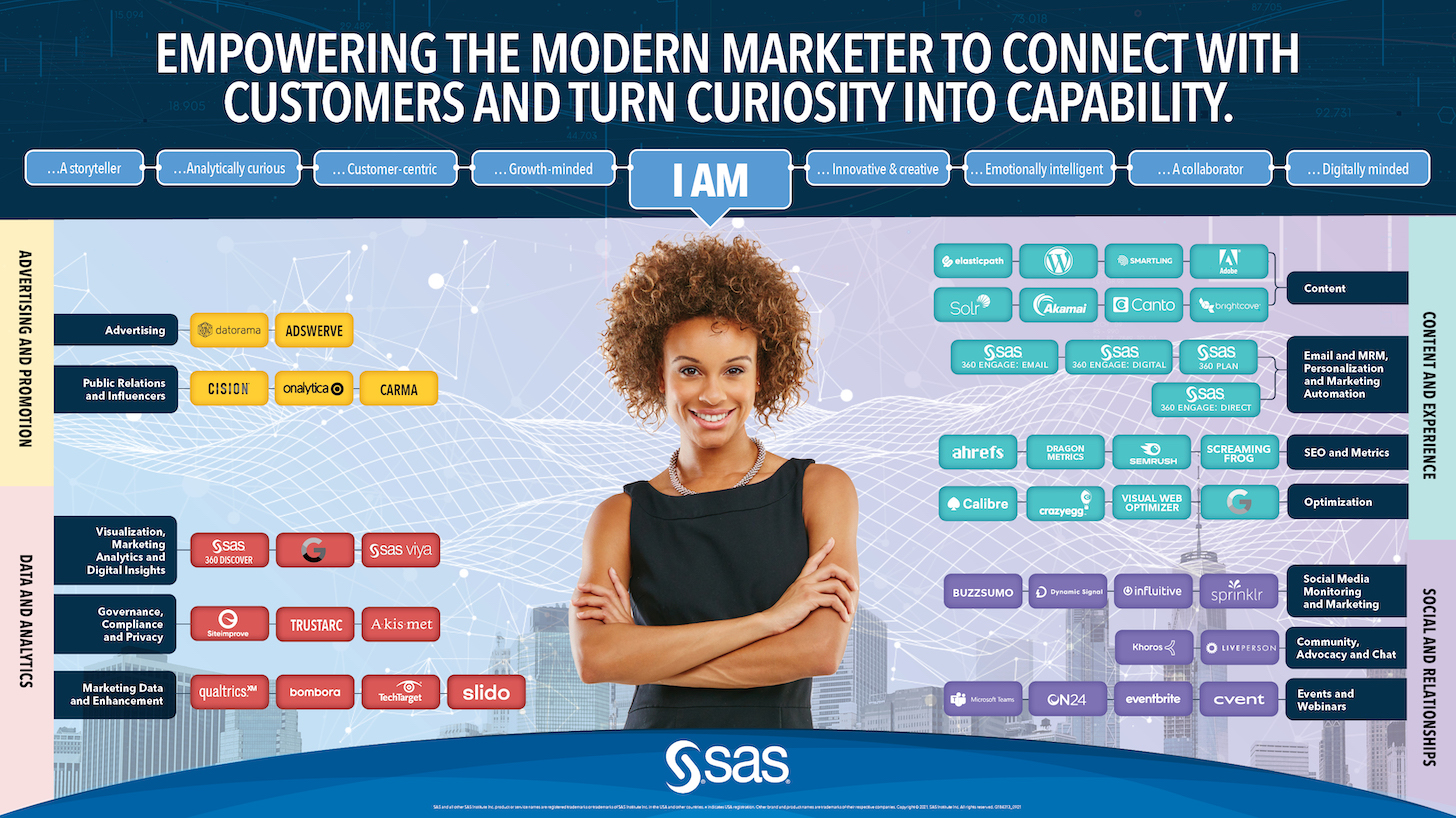
2. Shopper Journey Map
A further widespread model is to align your martech stack versus unique phase of the customer’s journey. Generally for entries to The Stackies, the journey is simplified into 4-5 levels, these kinds of as Find, Think about, Get, Onboard, and Expand.
This marvelous illustration from Juniper Networks and their 2021 Stackie entry illustrates two proportions: the shopper journey horizontally and the vendor classes applied vertically:
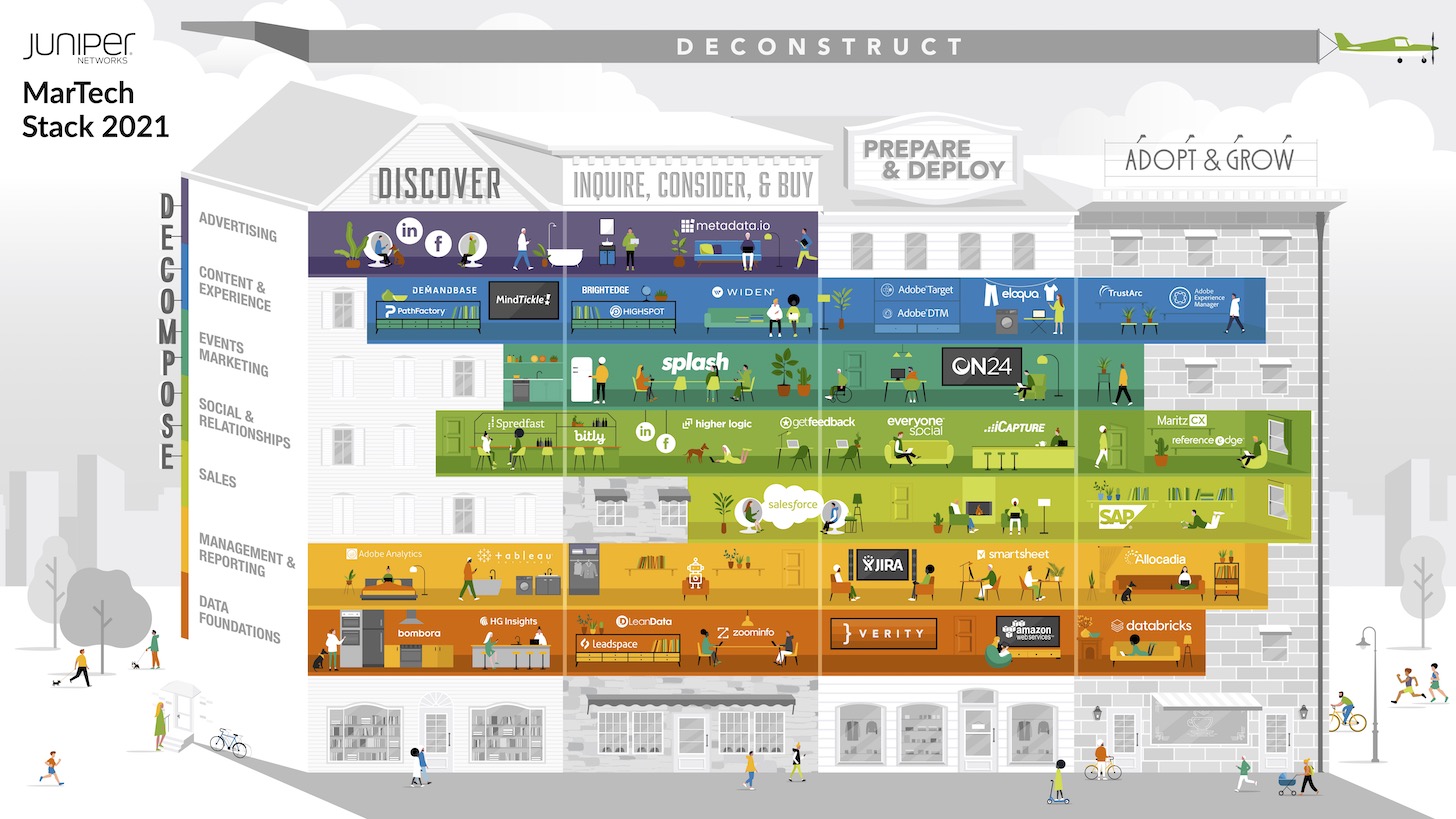
3. Back-Stage vs. Front-Stage
A further way of searching at your stack is as a result of a theater metaphor: again-stage and front-stage apps and platforms. Front-phase applications immediately touch the client — e.g., web ordeals, e mail strategies, social media engagement tools, advertising, and many others. Back-phase apps are made use of to provide interior stakeholders, these kinds of as analytics, preparing, asset management, productivity, etc.
This is an sophisticated illustration from Red Wing Shoes and their 2017 Stackie entry, with back-phase to front-phase categorization along the vertical access and purchaser journey stage alongside the horizontal axis:

4. Purpose or Part-Based Map
Though martech stacks can be pretty huge, any a single particular person in the promoting section is unlikely to have to study all of the apps inside of it. Distinct roles within just internet marketing will use distinct tools. So yet another valuable way of mapping your martech stack is to team applications by the roles or capabilities that use them. This is reveals the “who” dimension of your stack, which is handy to see the interrelation involving applications, competencies, and results.
This case in point from Bigtincan’s 2019 Stackie entry illustrates a few principal roles: net administration, advertising automation, and content material internet marketing:
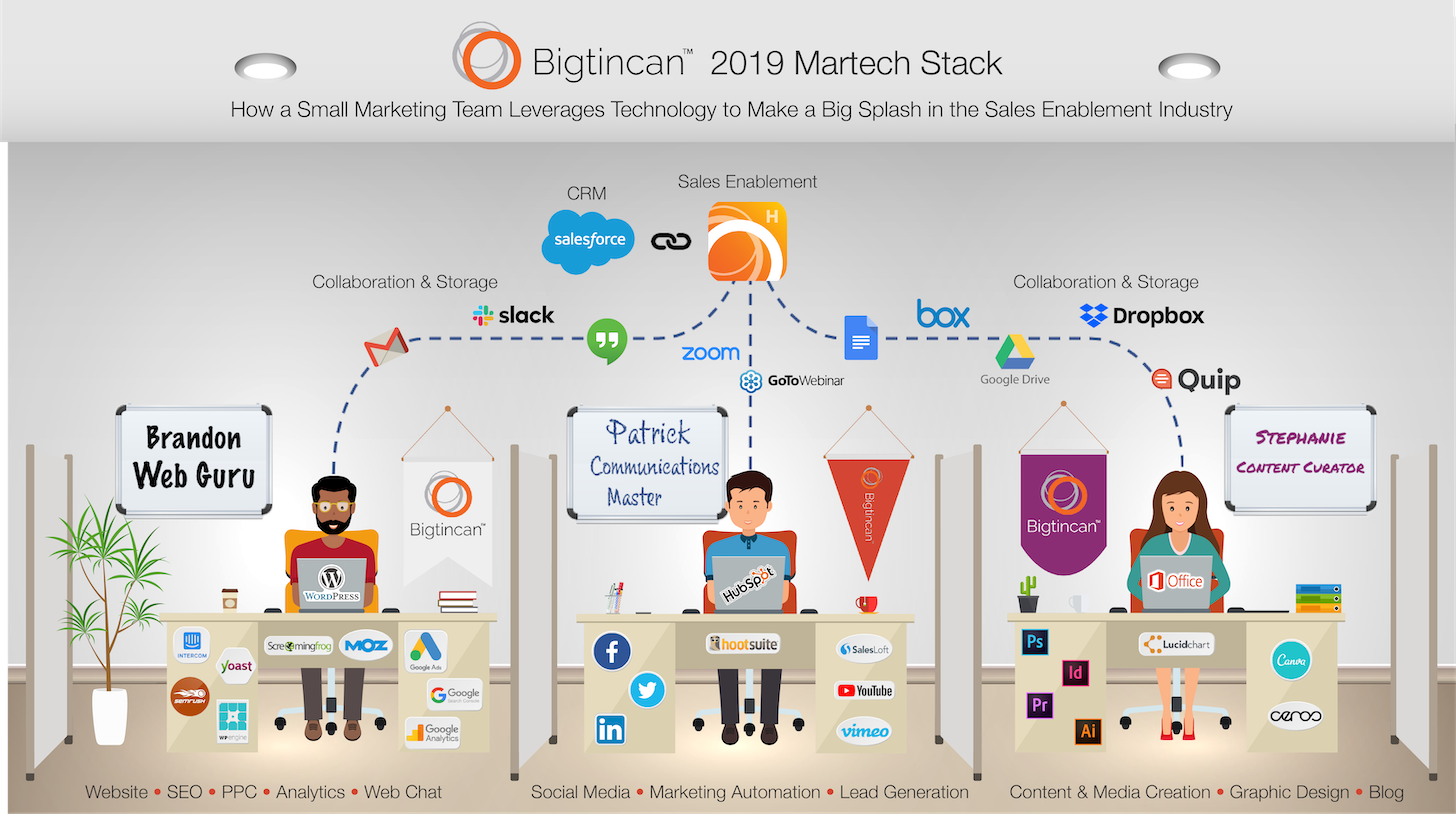
5. Place Remedy/System Ecosystem Map
Integration is critical to an powerful martech stack. A further good way to visually assess your stack is to clearly show the system(s) that are the gravitational center(s) of your martech stack and which professional apps combine to each individual of them. It’s an ecosystem see of your stack.
This case in point from Poly’s 2020 Stackie entry really captures five distinctive dimensions, together with relative investment, compensated/gained/owned options, vendor class — and identifies platforms, integrated professional apps, and stand-on your own stage methods:

6. Utilization Map (Relative Time in Equipment)
Some martech apps are employed frequently, as an integral aspect of marketing’s working day-to-working day operations. Other apps, nevertheless, are additional specialised and used significantly less frequently. This does not mean they are not useful. They just have a time and put for their goal. Pinpointing heavily-employed main tools vs. lightly-used resources experts can be a different insightful way to have an understanding of the composition of your stack.
This example from Airstream’s 2019 Stackie entry cluster apps primarily by their use case — planning, artistic, engagement, supplier channel, and measurement — but the height of the pine tree icons represents the relative time marketers spend interacting with each individual resource:
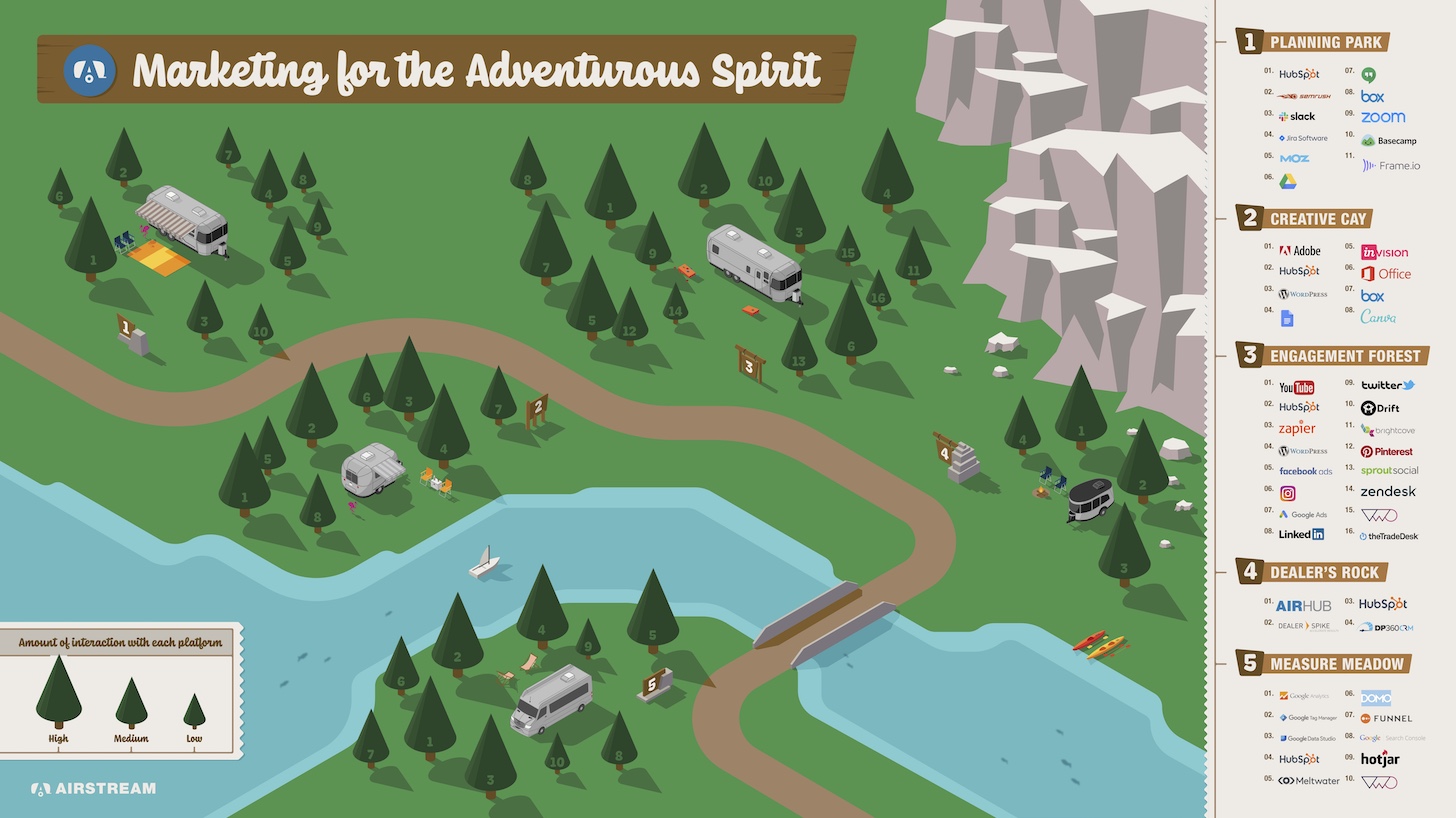
7. Relative Degree of Automation
Whilst thinking of the sum of time that people shell out engaged with distinctive equipment in your stack, it’s an appealing lens to examine how automatic all those instruments are. Which instruments are made use of mainly manually? Which kinds have sizeable automations? This look at can be practical equally to recognize the relationship among applications and internet marketing approach and operations. It can also help detect prospects to automate.
Automation is the most significant frontier in Significant Ops in my feeling.
This instance from Paychex’s 2019 Stackie entry maps out their martech applications on two dimensions: various promoting capabilities and the degree to which they are automatic:

8. Tempo Layering of Platforms and Applications
Over a 10 years back, as tech stacks in typical — not just martech — were being increasing swiftly, Gartner proposed a way to manage them by “pace layer.” They recommended 3 layers: systems of history, programs of differentiation, and units of innovation.
Techniques of document really should be pretty stable and have a sluggish tempo of change. They are the platforms on which other program and expert services depend. Systems of differentiation embody the processes and ordeals that make your business enterprise exclusive. They transform extra usually, but are still fairly steady. Programs of innovation are extra experimental, the area in which new capabilities can be formulated and piloted immediately.
1 of the ideal Stackie entries was this one particular from Microsoft in 2017, which mapped equipment along the infinite loop of shopper journeys, but then also separated them into Gartner’s 3 speed levels:

9. Evolution of Martech Tools More than Time
Martech stacks really don’t stand however. New equipment are extra. Old applications are changed. This is portion of the normal evolution of a small business as it grows — and as the broader advertising and martech atmosphere carries on to modify about it. It can be beneficial to examine your martech stack by the lens of its transforming application inventory more than time.
This illustration, despatched in by reader John Schott in 2017, shows a five-yr journey of a modest economical expert services business:

10. Associated Capabilities Map
At the intersection of groups and tools, capabilities are developed. Relatively than on the lookout at your stack by the lens of seller types, you can prepare a watch around distinct abilities, this kind of as marketplaces, consumer-produced articles, written content syndication, qualitative and quantitative study, and so forth. Mapping these abilities in clusters, to display their adjacencies and relationships with each individual other presents you a image of the ecosystem about your stack.
This 2021 Stackie entry from Philips is a great instance:

Other Strategies to Map Your Stack
Of class, there are quite a few other ways to visualize other proportions of your stack.
For occasion, you could manage it all around aggregation technologies in just your martech stack. How are you horizontally aggregating knowledge, workflow, knowledge, and governance throughout a lot of distinct applications, information sources, and client touchpoints? Which equipment are you employing to vertically integrate those people levels in specific domains, such as CRM?
Alternatively, you could illustrate your stack to emphasize the diploma of customization inside different applications and platforms. They may selection of purely out-of-the-box professional applications, to packaged goods that have been custom made or prolonged with your very own code, to wholly custom applications that are distinctive to your company.
Each and every of these unique methods can give you unique insights into the mother nature of your stack — and help you communicate them to stakeholders across your firm.
What does your martech stack seem like?
Reminder: Even if you don’t enter The Stackies you — even though we surely hope you do — really don’t overlook to indication up for the free webinar on #MartechDay, May perhaps 3. We’ll be unveiling the new 2022 martech landscape, releasing a State of Martech report, and celebrating the entrants and winners of this year’s Stackie Awards.
[ad_2]
Supply backlink





More Stories
The Job Offer Letter – How to Negotiate a Job Offer
How to Audit Your Business Strategy
Microsoft Excel 2007 Tutorial – How To Create a Table